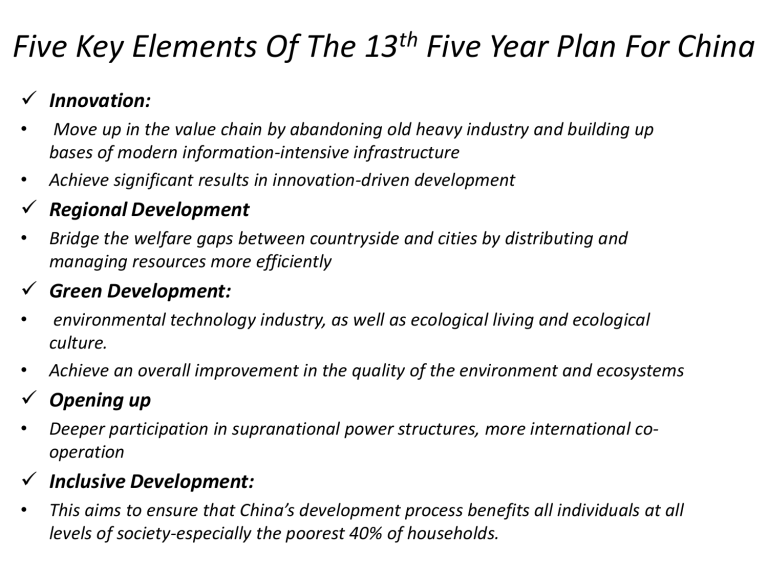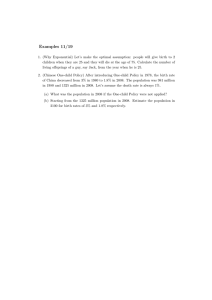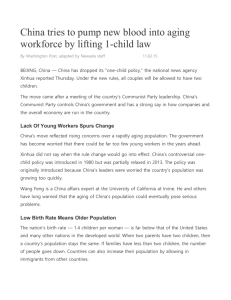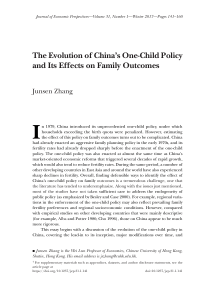
Five Key Elements Of The 13th Five Year Plan For China Innovation: • • Move up in the value chain by abandoning old heavy industry and building up bases of modern information-intensive infrastructure Achieve significant results in innovation-driven development Regional Development • Bridge the welfare gaps between countryside and cities by distributing and managing resources more efficiently Green Development: • • environmental technology industry, as well as ecological living and ecological culture. Achieve an overall improvement in the quality of the environment and ecosystems Opening up • Deeper participation in supranational power structures, more international cooperation Inclusive Development: • This aims to ensure that China’s development process benefits all individuals at all levels of society-especially the poorest 40% of households. China-Recent Structural Reforms: End of the one-child policy • Starting on January 1, 2016, all Chinese couples are allowed to have two children. This marks the end of China’s one-child policy, which has restricted the majority of Chinese families to only one child for the last 35 years. Reforms of the hukou system • China’s government has announced a lofty goal of expanding urban hukou or residency permits to 100 million migrant workers by 2020 as part of its plan to rebalance its economy. • Made In China 2025: • Made in China 2025 seeks to engineer a shift for China from being a low-end manufacturer to becoming a high-end producer of goods. • They are pushing for leadership in robotics ,information technology and Power generation, agricultural equipment, etc among other sectors.





